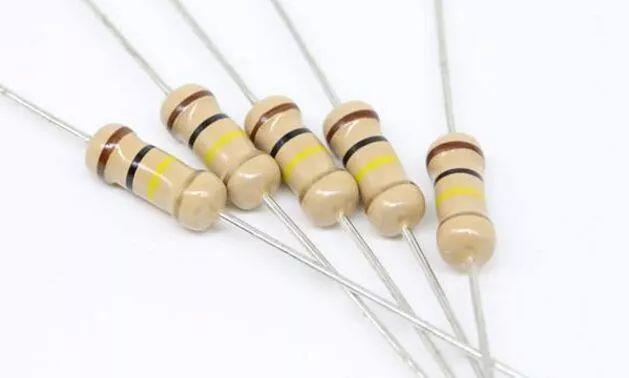OUTLINE:
What Does Resistor Color Code Mean?
 488
488The resistor color code is a system of marking resistors with colored bands to indicate their resistance value, tolerance, and other important parameters. The color code consists of four or five colored bands that are painted onto the body of the resistor.

The first two bands represent the significant digits of the resistance value in ohms. The third band represents the multiplier or power of 10 that should be used to multiply the first two digits. The fourth band represents the tolerance of the resistor, which indicates how much the actual resistance can vary from the stated value. For example, a gold band means a tolerance of +/- 5%.
Some resistors also have a fifth band, which represents the temperature coefficient of the resistor, indicating how much the resistance will change as the temperature changes.
To determine the resistance value of a resistor using the color code, you must read the colors from left to right, starting with the band closest to one end of the resistor. A color chart or calculator can be used to decode the colors and calculate the resistance value.
Here are some additional pieces of information about resistor color codes:
The color code is a standardized system that is used around the world, although there are slight variations in the number and position of bands depending on the type and tolerance of the resistor.
The first two bands represent the most significant digits of the resistance value. For example, if the first band is red and the second band is green, this indicates a resistance value of 25 ohms.
The third band represents the multiplier or power of 10 that should be applied to the first two digits to get the final resistance value. For example, if the third band is brown, this indicates a multiplier of 10, so the final resistance value would be 250 ohms (2 and 5 followed by one zero).
The fourth band represents the tolerance of the resistor, which indicates how close the actual resistance can be to the stated value. Different colors are used to indicate different tolerances - for example, gold is +/- 5%, silver is +/- 10%, and brown is +/-1%.
Some resistors also have a fifth band, which represents the temperature coefficient of the resistor. This indicates how much the resistance will change as the temperature changes. Common temperature coefficients include 50 ppm/°C, 100 ppm/°C, and 250 ppm/°C.
When reading the color code, it's important to remember that the bands should be read from left to right, starting with the band closest to one end of the resistor. Also, make sure to distinguish between similar-looking colors, such as brown and red, or orange and yellow.


Disclaimer: The views and opinions expressed by individual authors or forum participants on this website do not represent the views and opinions of Chipsmall, nor do they represent Chipsmall's official policy.

share this blog to:

